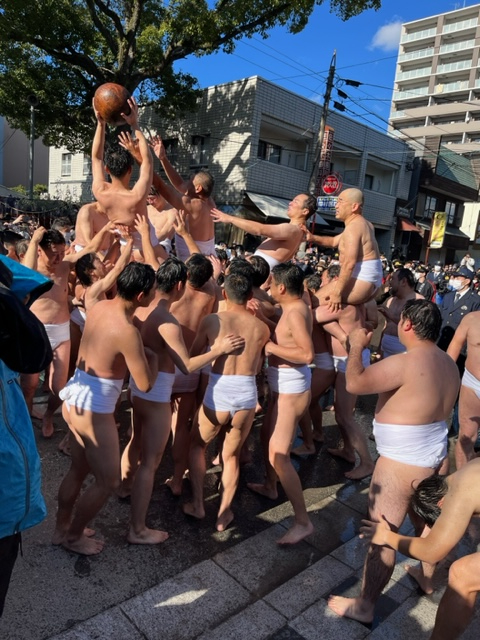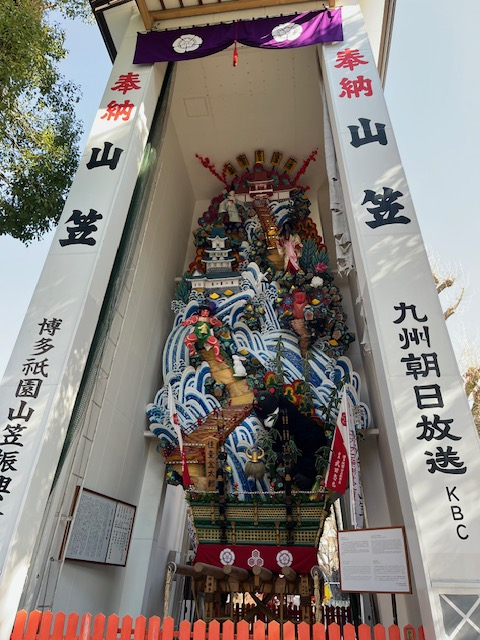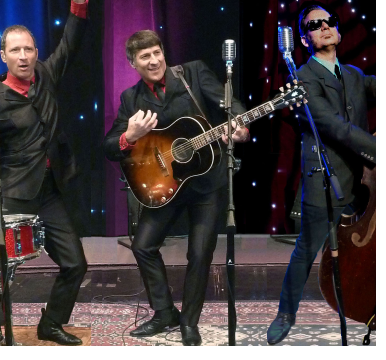Harmony, order, and self-development are three main pillars of traditional Japanese culture. These three important values underscore Japanese traditional culture by offering a glimpse into societal norms, basic attitudes toward “self,” and social interactions with others. These have their roots in Japanese philosophical traditions that can be found in both Shinto and Buddhist religious traditions and customs, as well as in Confucian ideals.
When considering “harmony,” it is a well-known cultural character trait of Japanese that thinking of others is paramount to keeping “order” in everyday interactions, and in promoting one’s own “self-development” by learning how to work within a group context, respecting one’s superiors and elders, and in being aware of one’s own role in society. These concepts are ancient in origin and are actively taught to Japanese students from childhood, both formally and culturally.
Some obvious and important Japanese cultural traditions that are practiced by Japanese people on a daily basis include customs that reinforce the three pillars of Japanese culture. The custom of bowing 45 degrees to show respect to elders and teachers is a trait that is learned by Japanese children from early childhood, or removing one’s outside shoes before entering into someone’s home or personal space. The act of not shaking hands or hugging when meeting friends or family members is representative of traditional Japanese culture.
Well before the worldwide pandemic caused so much tragedy, and people around the world began to wear face masks to protect themselves and others from the rapidly spreading COVID-19 virus, Japanese people already had this custom of wearing face masks to protect others when they came down with the flu or a cold.
Personal hygiene is an important and necessary aspect of Japanese culture. Changing out of regular house slippers into special toilet slippers before entering the toilet is an entrenched custom in Japan, as is bathing in the evening instead of the morning to make sure one is clean before lying down in the futon to sleep at night. Having the toilet area separate from the bathing area is another aspect of hygiene that Japanese people observe.
Mixing the two things is considered to be unhygienic and normally avoided, except when the only option (due to space) is a unit bath where the toilet, face and hands washing sink, and bath tub are all in the same area.
Many religious-related customs and traditions make up a large part of traditional Japanese culture. Most festivals and holiday celebrations are based on either Shinto or Buddhist traditions and customs. Most Japanese consider themselves to be both Shintoists and Buddhists, allowing both religions to coexist side by side, allowing Japanese people to glide easily from one religious tradition to the other without any spiritual or religious conflict. For example, the values of “purity” and “cleanliness” are found in Shinto traditions and the concepts of “perfectionism” and “minimalism” can be found in Buddhism.
Confucianism has also influenced Japan greatly as an important aspect of Japanese traditional culture. Especially in the area of the traditional family unit, Confucian attitudes and customs have made a huge impact upon Japan. The idea of respecting one’s elders and teachers and living together following a strict moral code are Confucian in origin. Confucianism notably has no deity that is worshiped but is followed, instead, by a strict code of personal and moral conduct.
As a religion (if it can even be categorized as a religion) Confucianism wasn’t originally formed or established as such to compete with other existing religions but it was developed more as a system or moral code to compliment religious practices and societal attitudes. Hence, there is no large church or group of priests that oversee it in the same way other world religions are institutionalized and practiced.
Five Confucian values that form the foundation for Confucian philosophy are humaneness, righteousness, propriety, wisdom, and fidelity. As is apparent, these are all very human-centered virtues that promote a peaceful existence. Ancestral worship, reverence to one’s ancestors, is a hallmark of Confucianism, which mirrors Buddhism closely in this aspect.
Modesty and humility are two important characteristics of Japanese people and they play an important role in daily interactions with others to maintain order and harmony in society. Bowing lower shows one’s respect to the other person (i.e. “I am not above you and I respect you.”). The longer and lower the bow, the higher level of respect the bowing person is demonstrating to the other person.
I remember when I was an exchange student in Tokyo back in 1979, my host family had invited a Buddhist priest to the house to pray for the souls of the family’s dead ancestors. When he arrived, my homestay mother’s bow was so deep that it almost seemed physically or humanly impossible to achieve. I tried to mimic her bow, but only was able to partially do what she did.
I spent much time that summer observing what she did because she was a stickler for proper protocol, regarding customs and traditions, so this gave me an opportunity to learn much from her good example. My observations paid off later when I came back to Japan to live long term. It was much easier to adjust to the culture having had that valuable experience as a 17-year-old.
Because Japan was traditionally an agriculturally-based society, and due to the widespread influence of the Shinto religion, it is no wonder that an important part of traditional Japanese culture is centered around Shinto festivals (matsuri) that celebrate the planting and harvesting of the rice crops each year. These festivals are celebrated all over Japan and often represent nicely the local cultural traditions of the area or community. (See festival photo below)

Photo above: Hakozaki Gu Tamaseseri Festival for the New Year. Men in fundoshi loin cloths battle each other while ice cold water is thrown on them to wrangle a wooden ball to get it deposited into an opening of the door of a shrine. The two sides represent the mountain god and the ocean god.
Main photo: Hakata Gion Yamakasa Festival Float (Shinto Festival)
Proper etiquette plays an important role in traditional Japanese culture. Outsiders visiting Japan on holiday are sometimes left scratching their heads trying to decipher the finer nuances and subtleties of Japanese culture. The Japanese refer to it as “reading the air” (kuuki o yomu) (“reading the room,” in English) meaning that in high-context countries where communication can be quite vague or indirect, like in Japan, much of the communication is achieved through inference, surmising the situation, and then reacting accordingly.
People who grow up in the culture intuitively know how to react or behave when confronted with certain situations … for those who are new to the culture, they have to learn through trial and error. In the worst case, a mistake can cause a businessperson to lose out on a business deal or friendship due to the cultural miscommunication, but normally, for newcomers, Japanese people can be quite forgiving when such things happen. But after being here for a long period of time, one is expected to know how to behave and react in a culturally appropriate manner and cultural faux pas are less likely to be overlooked.
Todd Jay Leonard was born and raised in Shelbyville, but has called Japan home for over 34 years. He is currently a full-professor at the University of Teacher Education Fukuoka in Kyushu where he lives, writes, and teaches. He is the author of 26 books and can be reached at toddjayleonard@yahoo.com
Get the most recent Shelby County Post headlines delivered to your email. Go to shelbycountypost.com and click on the free daily email signup link at the top of the page.







